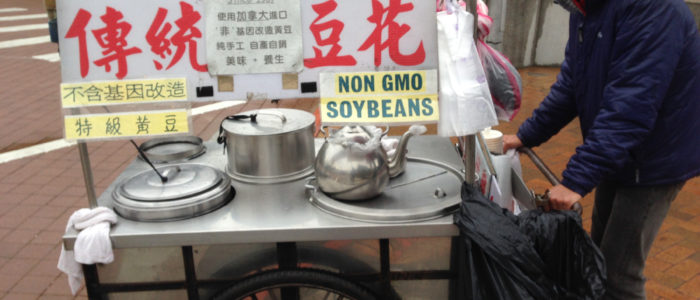
You can’t run a business without taking risks. The unexpected lies around every corner of the restaurant industry. It seems every day in the news we hear the Klaxon call of climate change, extreme weather, and restless populations. Frost-free seasons are lengthening; more droughts and heat waves are coming. Feels remote, doesn’t it? It will never happen to you or your establishment.
The unexpected happens, or else Murphy would have no law. It is not a question of if but when, and, without sounding the alarm too loudly, you should be prepared. A stitch in time could save your restaurant.
Of course it’s not fun to contemplate, much less meticulously plan, for something bad to happen. Doing so feels as if one is tempting karma. If you’re not up to the task, ask for help. Ask your brother-in-law, a friend, consult your insurance agent, or hire someone who has completed a crisis plan before. The point? Make it a priority.
How to Survive a Crisis
The goal here is resilience, which means the ability to bounce back after a catastrophe. Getting back in the saddle after you’ve been knocked off your horse is easier when you’re working with a plan. As John F. Kennedy once said, “There are risks and costs to a program of action. But they are far less than the long-range risks and costs of comfortable inaction.”
The statistics are authoritative and definitive. According to the U.S. National Archives and Records Administration, only 40 percent of businesses struck by disaster will resume operations afterward. It comes as no surprise, then, that the Federal Emergency Management Agency (FEMA) reports almost 75 percent of small businesses do not have a disaster plan in place. A plan makes a significant difference between resilience and failure.
“The unexpected happens, or else Murphy would have no law. It is not a question of if but when, and, without sounding the alarm too loudly, you should be prepared.” – Darryl Benjamin
What kinds of disasters can befall your restaurant or establishment? Earthquake, tornado, cyclone, drought, flooding, fire, pandemics, and that’s just nature. Human-made catastrophes include loss of utilities (water, gas, electricity), supply shortages, contaminated water, food-borne illness, accidents, computer system failure, data theft, criminal acts (extortion, robberies, injuries, fraud, product sabotage), bomb threats, violent protests, active shooters, and even terrorism. Many experts agree these catastrophic events are only going to get worse and more frequent.
Here’s the thing: Crises don’t come announced. They are a sucker punch delivering a body blow to your restaurant. Preparation is the key to the sturdiness and elasticity necessary to spring back into shape.
Crisis Planning and Preparation
The guiding principle behind crisis management is safety and security—basic human needs—which can be defined by protection from elements, order, law, stability, and freedom from fear. But things fall apart, the future is unknown, the unexpected happens.

The goals of your crisis management strategy should be to:
- Reduce/eliminate negative impacts on your business (traffic, sales, recovery costs, earnings, etc.)
- Preserve/improve image (guests and public perception)
- Preserve/improve image (key stakeholders, employees, business partners)
- Return to normal operations as soon as possible
- Limit your competition’s ability to take advantage of the event
Distinguish yourself from the competition by taking quick, thoughtful, strategic action. If a crisis occurs with your pants down, there’s a good chance you already lost the battle.
“Crises don’t come announced. They are a sucker punch delivering a body blow to your restaurant. Preparation is the key to the sturdiness and elasticity necessary to spring back into shape.”
Examples of a comprehensive crisis management plan include:
- Evacuation plans
- Fire protection plans
- Occupational health and safety program
- Environmental policies
- Security procedures
- Insurance program
- Finance and purchasing procedures
- Building and facility closing policies
- Employee manuals
- Hazardous material plans
- Human resource planning
- Communication and media procedures
- Data storage and recovery
Is Your Insurance Enough?
When it comes to insurance, what you don’t know is your biggest threat. Not knowing what to leave in, what to leave out, what might happen, what is unlikely amounts to a guessing game that rivals Las Vegas. Only the stakes are much higher: It’s your business on the line.
Once the event has begun, it’s too late to buy or modify your insurance. In short, you’re cooked. Insult to injury, many commercial general liability insurance policies may not include recovery efforts.

Review your insurance policy with your broker
Is the building covered? Equipment? Are there any limits, exceptions, or exclusions? Does it split up wind and water damage? Are there areas you are underinsured? Ask pointblank questions: Could we survive this event? Do we have the appropriate coverage? Is there anything we should be doing differently? Leave no stone unturned.
Business interruption insurance can cover some of your business expenses should your restaurant be shut down for an extended period.
No matter which policies you choose, be sure to keep all important business documentation safe by storing data and paper files off-site. You need to access these critical documents quickly during the recovery process.
Lastly, schedule regular reviews of your policy and preparations with your broker. You might go so far as to ask directly or check up on your broker: How was her past performance? What kind of track record does she have for crisis event coverage in your geographical area?
Is Your Inventory Current and Complete?
Regularly documenting and updating your inventory is crucial to your resilience. How can you bounce back if you have no record of how things were? Have a current, written inventory of food, supplies, equipment, technology, and furniture. Store a copy of the list off-site in a reliable, protected environment. The written word is made stronger by photos. Take stills or videos of entrances, ceilings, and walls. This will help the insurance process run more smoothly and quickly.
Your POS system should always have a good benchmark of current inventories available. Use it to measure crisis impact by contrasting before and after data. This too will help with insurance and possibly with government assistance programs.
Create a Crisis Management Team
One of the smartest moves you can make is to create a crisis management team. You can’t do it all alone! Include your most trusted employees, marketing and PR, HR, and possibly your attorney. Designate individuals who will help direct others to safety. Choose one person to be the spokesperson who will guarantee your business speaks with a consistent voice and message.
The mantra of the crisis management team is, “Safety first.” Part of the team’s responsibility is to assure safety of guests, staff, and anyone sheltering in your establishment. First-aid classes and certifications should be part of managers’ preparation.
It’s critical to develop a sense of trust in your team as you divide the labor of preparedness planning. Emergency plans should be shared with everyone, even temporary staff.
Task your team with creating a simple plan. One that can be an anchor, or better yet a lighthouse, in the middle of chaos. Emergency contact information should be part of the plan, and the plan itself should be visible and accessible at a moment’s notice.

Create a Communication Plan
Your communication plan is your lifeline. It should be comprehensive, including guests, the public, employees, investors, suppliers, and business partners. It’s a good idea to assign an owner to coordinate all communication/media activities.
Give your staff a set of talking points but ask them to refrain from speaking or posting anything about what’s going on. Ask them to refer all questions to your crisis management team.
“Crises don’t come announced. They are a sucker punch delivering a body blow to your restaurant. Preparation is the key to the sturdiness and elasticity necessary to spring back into shape.” – Darryl Benjamin
Create a Risk Assessment Plan
Anticipate each type of disaster and your initial response to it. Assess the risk your establishment faces for each type of major disaster. Whether the emergency involves a disruption of the water supply, a power outage, sewage backup, flood, fire, hurricane, earthquake or other disaster, make plans for each emergency.
Create a Food and Water Plan
How will you minimize food loss? Consider using a refrigerated truck or warehouse to preserve food during an emergency. Use fresh product first, refrigerated product second and frozen product third. Water might be scarce during a crisis. Keep an emergency supply on hand. Create an emergency menu that uses less water for prep work. Don’t forget to consult with other restaurateurs to see how they handle the situation.
What to Keep in Your Emergency Kit
When infrastructure fails, people get hurt. Your emergency kit should include a backup generator, flashlights, blankets, batteries, non-perishable dry goods, a first aid kit, tools to turn off utilities, and whatever else is relevant to your situation.
Supply Interruptions
During the event it’s likely product deliveries will be cut off for up to a week. When they do return, it might be on a limited basis.

Useful Tools for Restaurant Crisis Management
Emergency Action Plan for Retail Food Establishments
Putting It Together: Your Crisis Management Plan
The plan is your reference tool delineating how you are going to respond in an emergency. It contains all of the above information in one printed and digital document. The document provides guidance, direction, and structure—all things in short supply during the confusion of a crisis. Keeping it handy will save valuable time during a crisis.
“Distinguish yourself from the competition by taking quick, thoughtful, strategic action. If a crisis occurs with your pants down, there’s a good chance you already lost the battle.”
Backup Your Backups
Critical business data such as payroll records should be backed up off-site. There are many information and records storage solutions out there that guarantee your essential documents survive any natural disaster.
Backup generators can be used to keep your establishment open, keeping lights on and providing solace and warmth to residents as well as customers and staff. Make very sure you know how to use the generators—dreadful stories abound of carbon monoxide poisoning using gas-powered generators.
Are You Prepared?
To test your preparedness go no further than reviewing all scenarios with your crisis management team. Is everything up to date? Is your evacuation plan still feasible? Has anything changed since you last reviewed your plans? Conduct a mock exercise annually to test the crisis management plan and team.
“Distinguish yourself from the competition by taking quick, thoughtful, strategic action. If a crisis occurs with your pants down, there’s a good chance you already lost the battle.” – Darryl Benjamin
Planning and Prep Action Checklist
- Review insurance
- Assign ownership
- Complete a risk assessment – determine specific potential high-risk events
- Develop a call tree of key employees
- Assess current tools and training
- Assess current business partners and relationships
- Build a CM strategy and structure book
- Establish CM processes and protocols
- Build playbook(s) by event
- Build a communication strategy
- Build and execute a training/readiness plan
1. Response
Full Disclosure: Tell the Truth!
Staying ahead of the PR nightmare means laying all your cards on the table. If during the crisis, you and your crisis management team offer regular updates on your social media sites, you will have succeeded in preventing others from hijacking your story. Break your own story! Proactive rather than reactive responses don’t wait for the local news media to reveal what they believe to be the facts. Instead, it’s vital you or your crisis management team deliver the facts on a regular, timely, and honest basis. This means fessing up if you make a mistake, even if it casts you or your establishment in a negative light. Rest assured, the truth will come out.
Telling your own story has two advantages: You control your own story, and you don’t have to play catch-up and defend yourself.
What do your guests and the public need to know? Let them know you are rebuilding and keep them updated along the way. Locals want to rebuild the community by supporting local businesses, so let them know when you will be ready to serve them again. Use the opportunity to draw closer to your community.
Telling your own story has two advantages: You control your own story, and you don’t have to play catch-up and defend yourself.
Emergency situations unnerve your staff as much as your guests. Stay calm, speak directly to guests, and again, make sure staff is on the same page about what information can be delivered.
Restrict Access to Your Social Media Accounts
Maintaining restrictions on who has access to your social media accounts equates to control over your message. You want your message to be conveyed in a unified, consistent voice that is in keeping with your crisis management goals or plan. Yet another instance of a stitch in time, you can shorten the crisis period by not having to rectify erroneous or confusing messages somewhere down the road.
Response Action Checklist
- Determine meeting protocols (who, when, where, frequency/expectations)
- Review action items from crisis management plan (Did owners actually execute?)
- Set-up a fact/data review process (track all inputs, fact check, assign ownership)
- Assign ownership to monitor external communication media (social, print and broadcast)
- State expectations, restrictions, and plans to employees (quickly, clearly, honestly), double-check for understanding
- Track commitments and tasks, keep a scorecard
- Record and track all decisions
2. Recovery
The storm has passed and now it’s time to pick up the pieces. Your goal is to recover as quickly and pain-free as possible. No matter how daunting, the shortest route around the problem is through it.

Contact your vendors and suppliers. Most contracts have a “force majeure” clause that can temporarily relieve you of contractual obligations during a national disaster.
Hire a crew for cleanup and restoration. Schedule an inspection by the health department and other applicable agencies to ensure the safety of your premises after a disaster.
Arrange to have all equipment inspected to ensure it is clean and operational. If necessary, make plans for the replacement and disposal of all damaged or destroyed appliances, heating, ventilation and air conditioning units as well as other fixtures.
Recovery Action Checklist
- Determine if recovery focus/project is necessary (not every event requires recovery)
- Assess pre-event key performance indicators (KPIs) against post-event KPIs to help determine requirements
- If so, attack recovery effort like any other major project:
- Goals (end result)
- Owner (project manager)
- Team members (roles and responsibilities)
- Timeline
- Data collection and analytics
- Process and protocols to drive execution
- Metrics/measurements
3. After the Fact
Recovering from a natural disaster can be almost as hard as surviving the storm. It almost always requires an extensive amount of time with your insurance broker. It’s important that you remain on track with your plan, and always keep your customers engaged while your business is closed. In most cases it can take up to two weeks to recover from a natural disaster. If you encountered extensive property damage, it will likely take longer.
Contact your lender and insurance company first. Before you rush to begin the clean-up process, it is imperative your insurer first assesses the damage. They need to see the damage to issue you an accurate estimate. Be sure to let your lender also know of your situation, as many large financial institutions will work with you to defer payments until you are back up and running again.
There are four things guests expect of you and your business during a crisis. The first is total transparency. Honesty without garnish. The second is newsworthy updates. The third is a sense of urgency or agency that things are being done. And finally, an awareness of “I’ve got this” accountability and leadership that someone’s at the helm.
“Recovering from a natural disaster can be almost as hard as surviving the storm.” – Darryl Benjamin
For example, if your business gets a low score after a health inspection, it’s best to be honest with your customers and stakeholders. Better you should deliver the message to your guests, who will, in the end, respect you for your integrity. Then you can move on to the next step.
Apologize when necessary. After you’ve explained the situation thoroughly and truthfully to your customers and stakeholders, you should apologize and outline how you’re going to fix the situation. Apologizing shows your guests that you’re taking steps to improve the situation. This will win back their trust.
And sometimes, while not as easy as 1-2-3, you can use the lemon of a disastrous event to make lemonade—this might be the perfect time to renovate your restaurant they way you’ve been planning to but never quite got around to it. Perhaps you couldn’t afford to shut down your restaurant for construction. What about that branding update or makeover? Now is the time to reinvent yourself! Renovations inside and out might be just the ticket you need to prosper.
“Sometimes, while not as easy as 1-2-3, you can use the lemon of a disastrous event to make lemonade.”
Next time?
Assess what lessons were learned and make necessary changes to your crisis management plan. Document everything you can. The 80 percent of time you spend in planning and preparation will pay off in cost savings and shorter response and recovery time.
After-the-Fact Action Checklist
- Schedule and conduct a debrief after event is closed (constituent participation is essential)
- Modify and update tools and plans
- Re-communicate updated tools and plans
- Train and practice the modifications
Reasons for Crisis Management Failure:
- Lack of focus and priority from leadership team
- Organization unprepared—no training or proactive planning and preparation
- Failure to establish a strategy and details
- Lack of clarity and alignment (key decisions, chain of command, roles and responsibilities)
- Did not follow through on commitments
- Used bad data for key decisions
- Overlooked the employees
- Lack of communication/media plan protocols—poor execution, straying from plan, mixed messages, lack of ownership
- Acted too late
Reasons for Crisis Management Success:
- Crisis management is an organizational focus and priority
- Clarity of program ownership (accountability, authority, responsibility)
- Potential risks have been identified and assessed
- Tools and plans are in place and we have practiced
- Key business partners have been identified and vetted and are part of our crisis management team
- Communication plan is comprehensive (addresses all constituents, including guests/public, employees, investors, business partners)
- Media plan in place: spokesperson identified, training, messaging, supporting protocols
- Insurance coverages have been reviewed and upgraded (if necessary)
- Embrace the cycle: training, assessment, revision (wash, rinse, repeat)
























